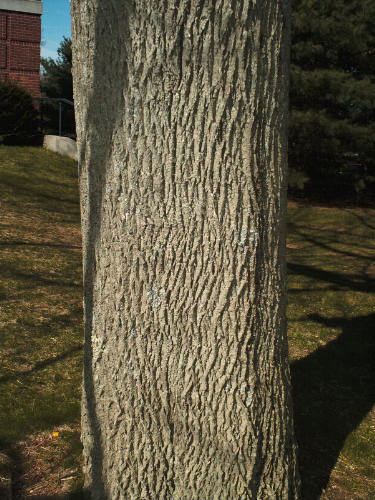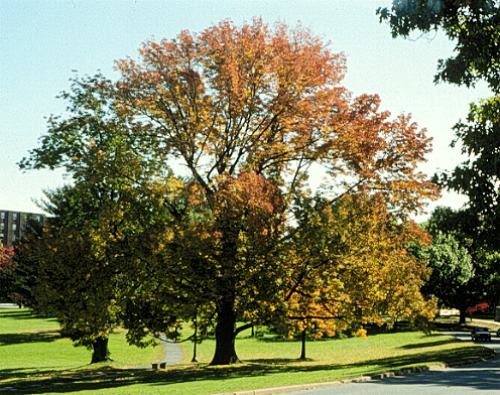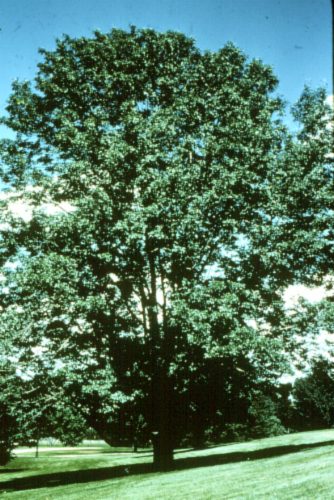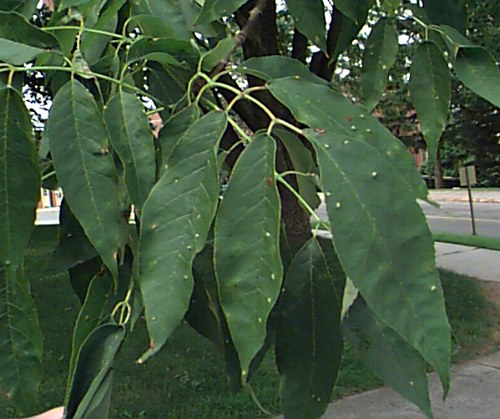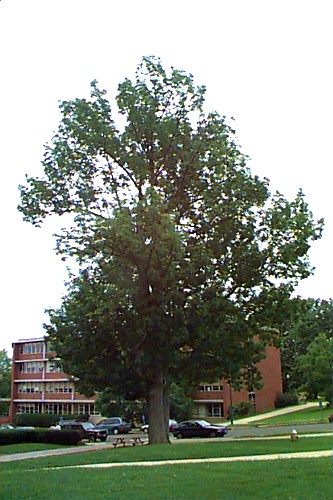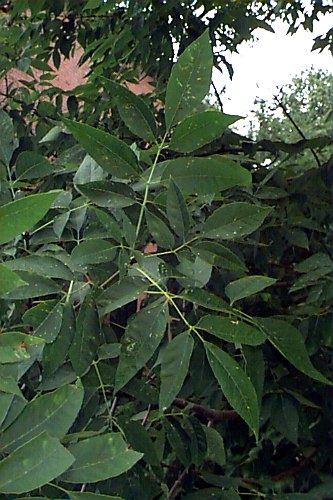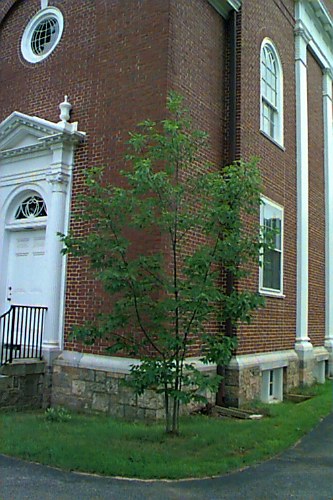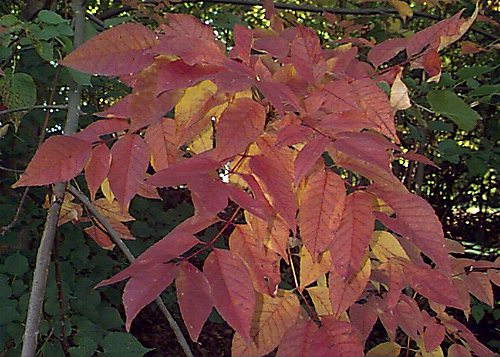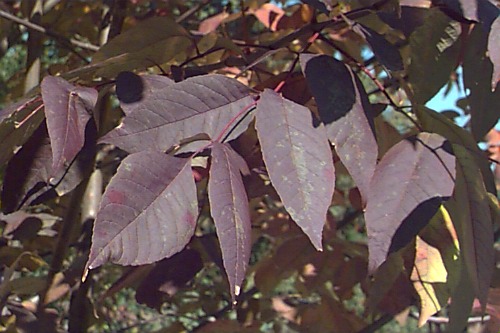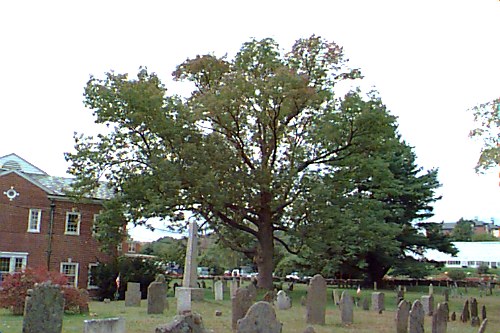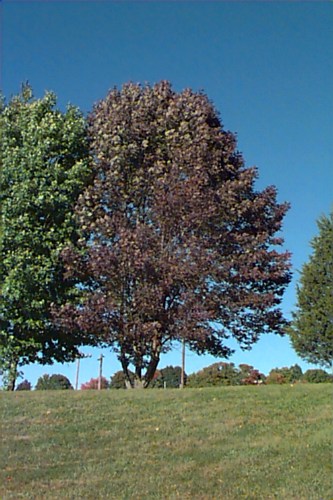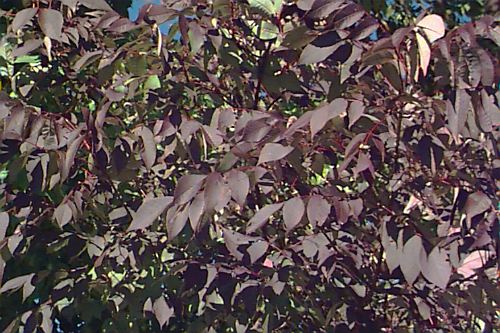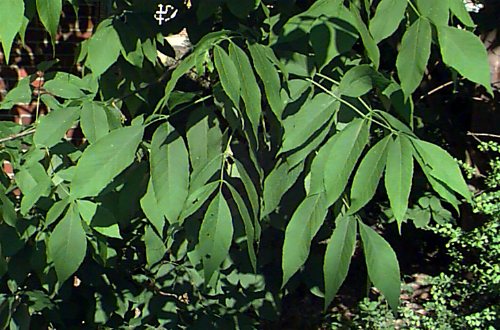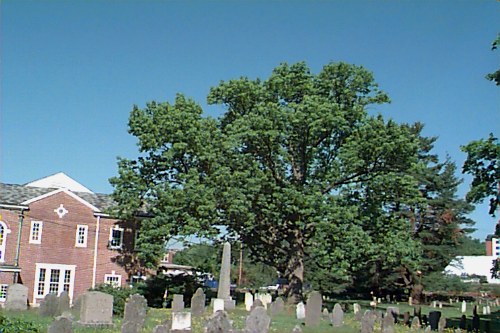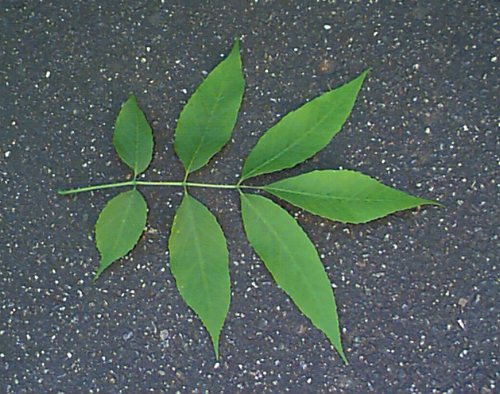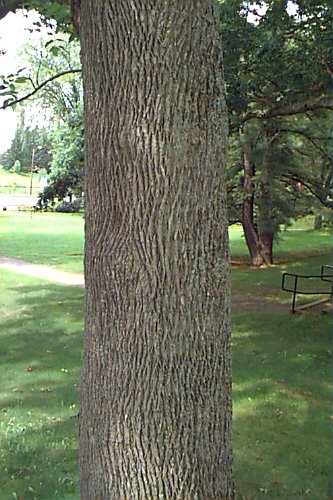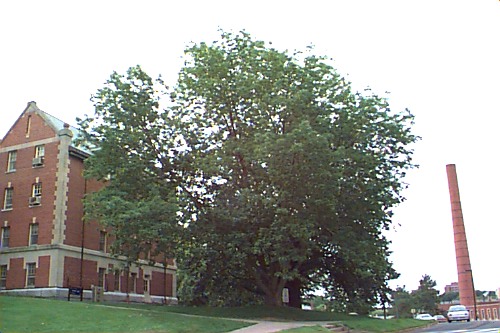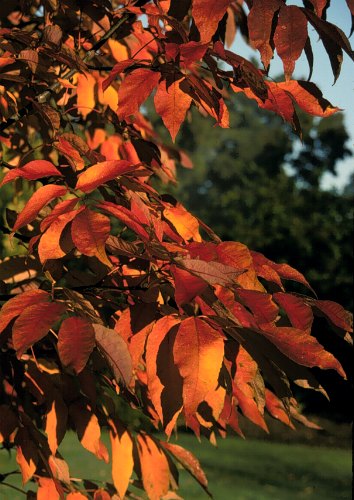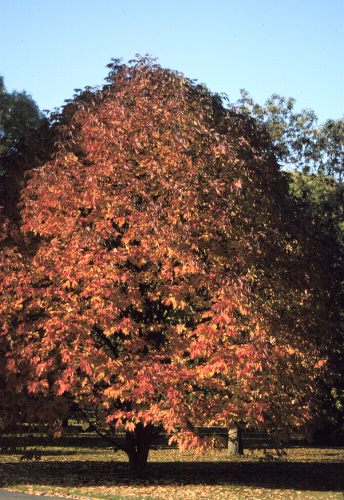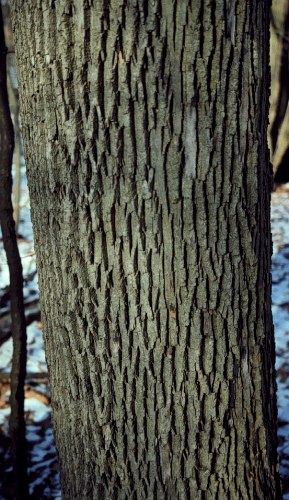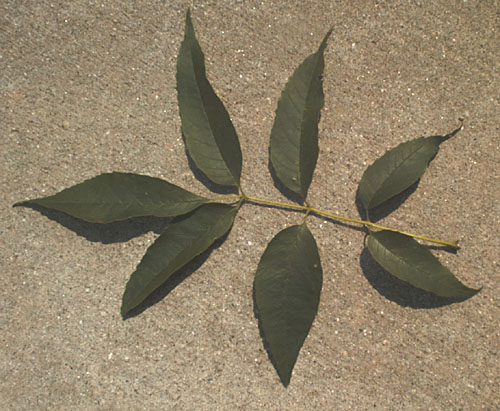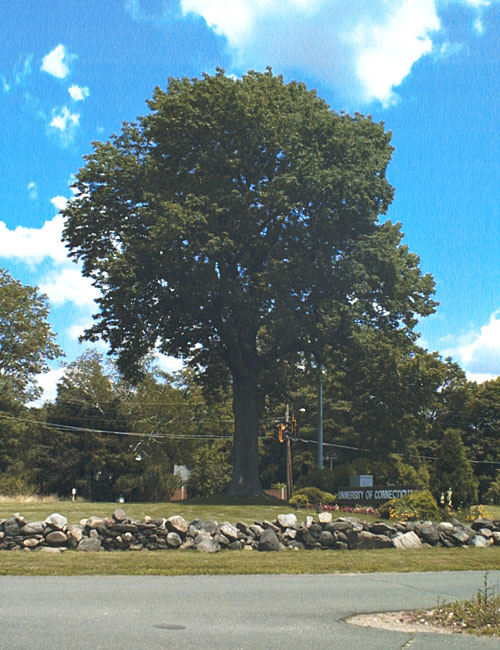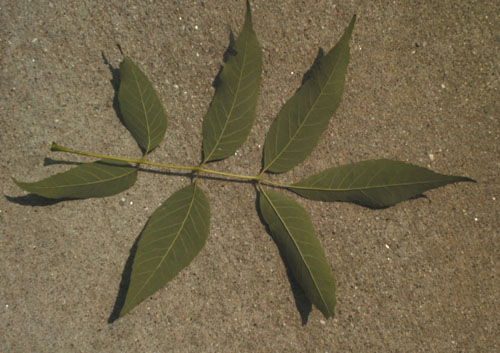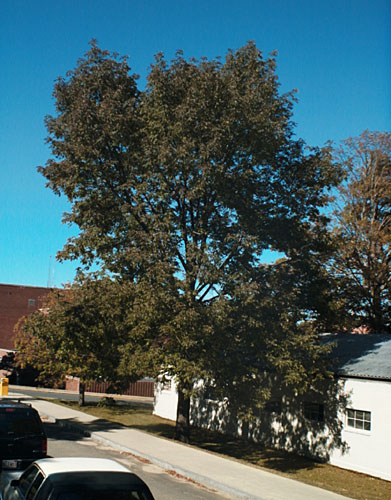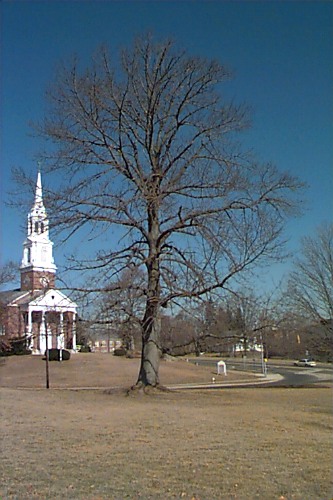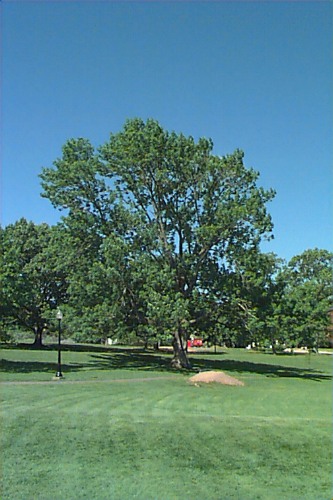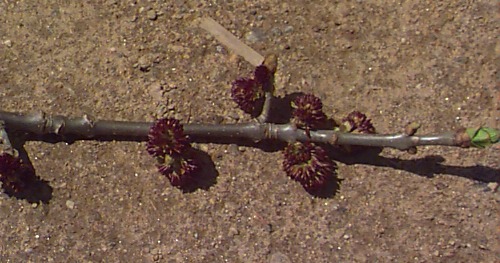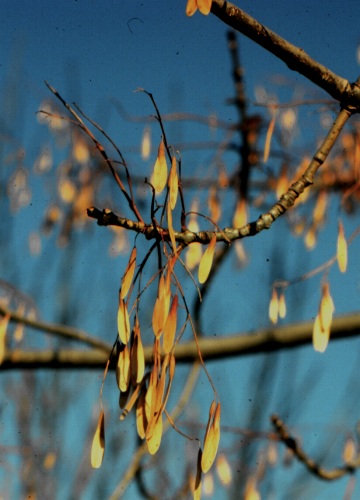Fraxinus americana
White Ash
Oleaceae
ExpandHabitat
- native to eastern North America
- hardy to zone 3
- a significant forest tree species in the northeastern U.S.
Habit and Form
- a large deciduous tree
- 60' to 70' tall
- shape is oval in youth, becoming more rounded with age
- branching is upright and spreading
- branches are distributed evenly in the crown
Summer Foliage
- opposite, pinnately compound leaves
- leaves are 8" to 15" long
- leaves have 5 to 9 leaflets
- leaflets can be anywhere from 2" to 6" long
- leaflets have a narrow ovate shape and acuminate leaf tips
- leaf color is dark green above and lighter below
Autumn Foliage
- turning yellowish with an overlay of burgundy or purple
- can be quite showy on the best specimens
Flowers
- dioecious, with male and female plants
- small flowers that are green, purple and black
- not ornamentally important
- bloom time is mid to late April
Fruit
- female plants produce samaras
- large numbers of fruit can be produced
- samaras are 1" to 2" long and narrow
- some describe them as paddle-shaped
- color changes from green to tan as they mature
- not ornamentally important
Bark
- relatively attractive
- uniformly furrowed with even diamond-shaped pattern
- color is light to dark gray
Culture
- full sun
- prefers moist, deep, fertile soils for best growth
- quite soil adaptable
- soil pH is not critical
- easily transplanted and established
- tolerant of poorly-drained soils
Landscape Use
- male plants are preferred for landscape purposes
- lawn tree
- shade tree
- street tree
- difficult growing sites
- excellent for parks and campuses
- wood is used for baseball bats
Liabilities
- female trees produce lots of seed, leading to numerous unwanted seedlings
- ash dieback (mycoplasma)
- ash borers
- ash flower galls (male plants) caused by a mite
- ash yellows
ID Features
- opposite leaves
- pinnately compound leaves
- female plants with paddle-shaped samaras
- uniform, diamond-shaped ridge and furrow pattern on bark
- leaf scars with a notch in them at top
- twigs gray and buds brown
- twigs stout
Propagation
- by bud grafting
- by seed
Cultivars/Varieties
'Autumn Applause' (Autumn Applause®) - This popular form produces a rounded, dense crown held by a straight trunk. The mature height is 50' tall and fall color is reported to be very good -- deep red.
'Greenspire' (Greenspire®) - This is an upright, narrow form that reaches 40' tall and 30' wide. Summer foliage is a good dark green and fall color is dark orange.'Jeffnor' (Northern Blaze™) - A Canadian selection, this seedless plant is notable for its extreme hardiness and resistance to winter damage. The growth habit is upright-oval to 60' tall and perhaps half as wide, and the fall color reportedly is purple.
'Jungiger' (Autumn Purple®) - This seedless ash is among the most common commercial selections and one of the best. It grows rapidly and forms a rounded crown 50' tall and slightly less wide. The leaves are a fine deep green in summer, becoming red-purple come fall.
'Skycole' (Skyline®) - Good form and growth rate are this tree's primary attributes, as it grows symmetrically to 50' tall with a strong central leader and lustrous green leaves that turn orange or red in fall.